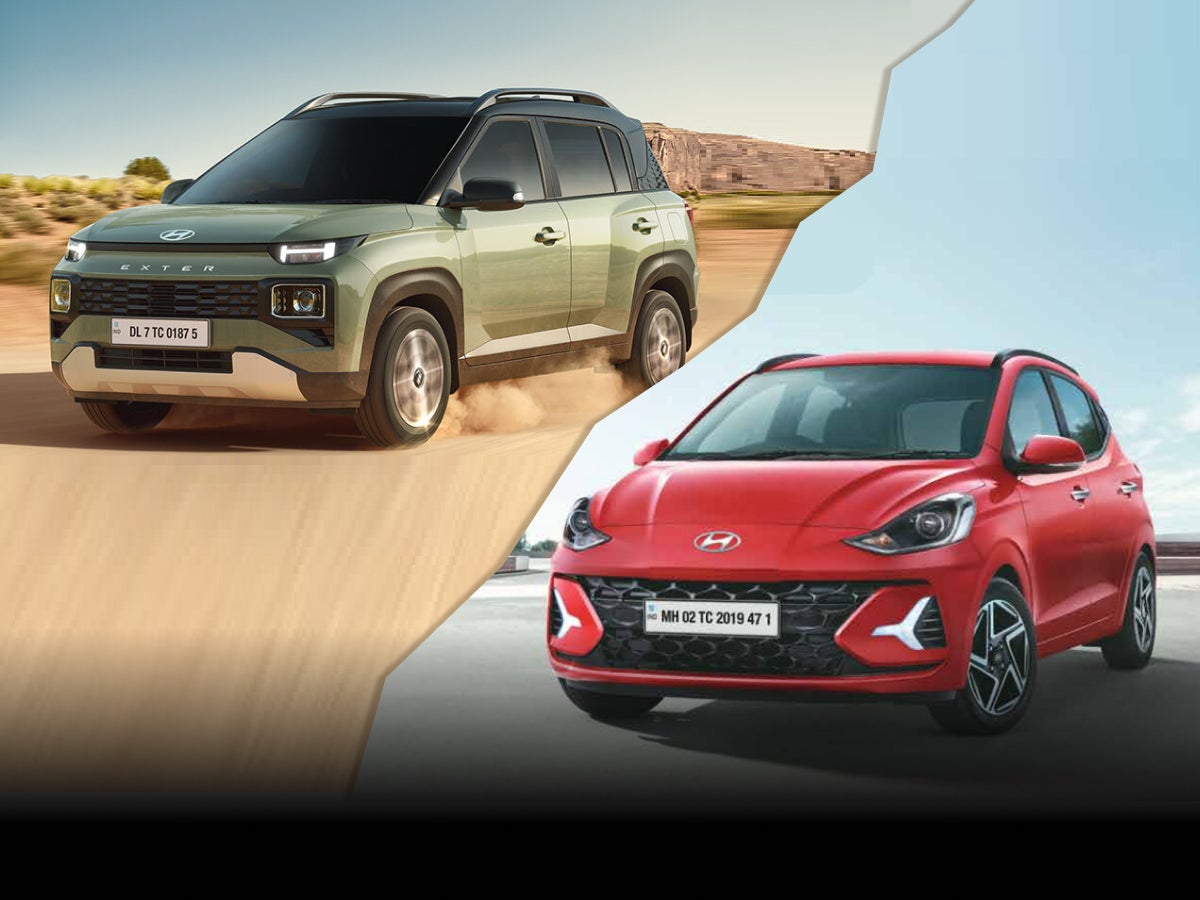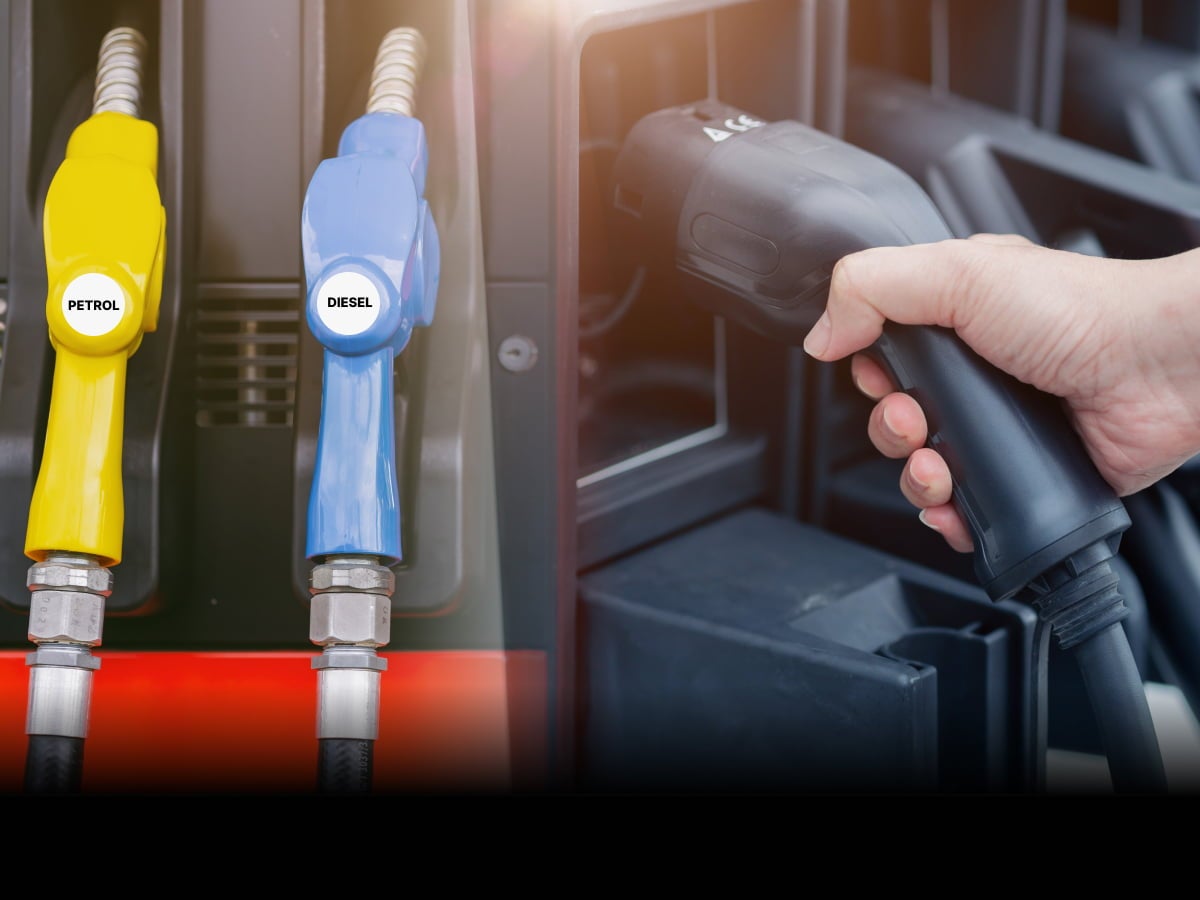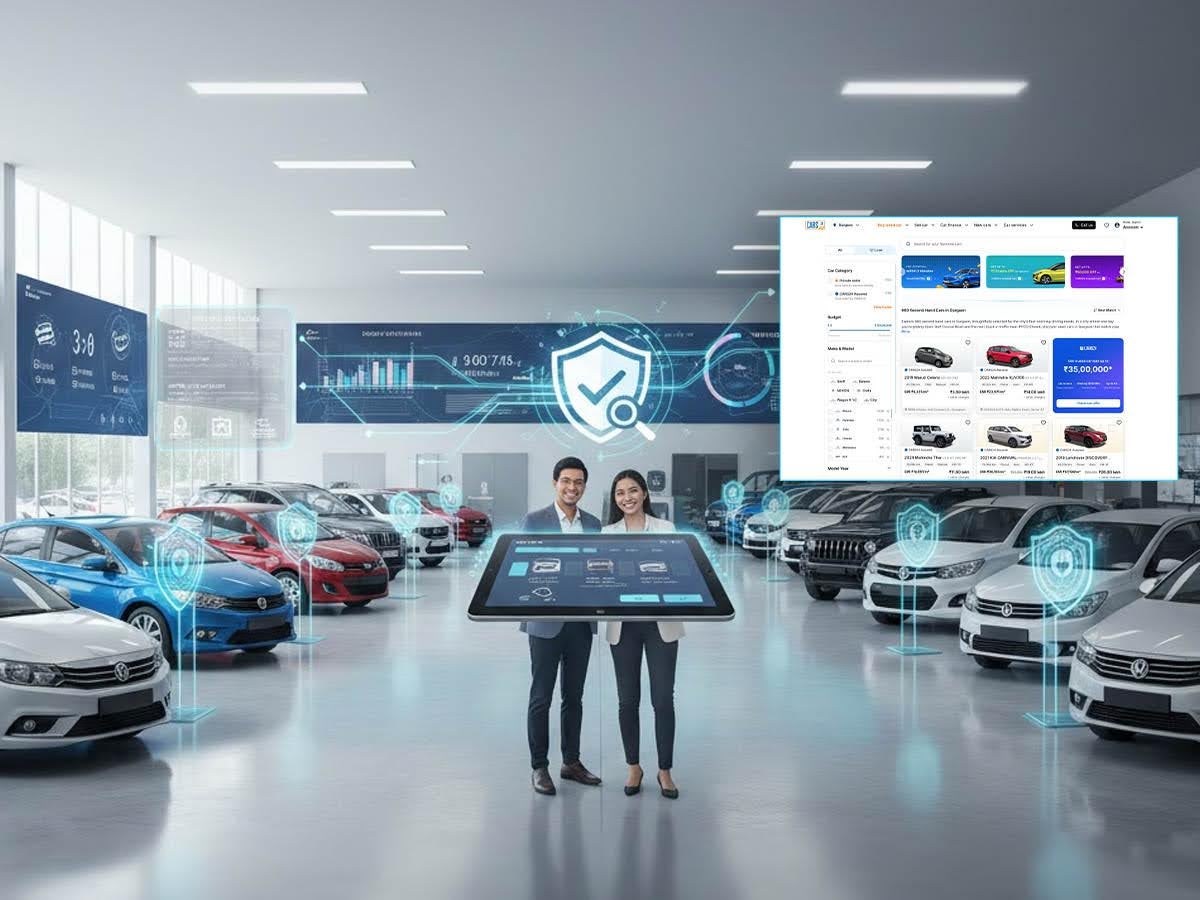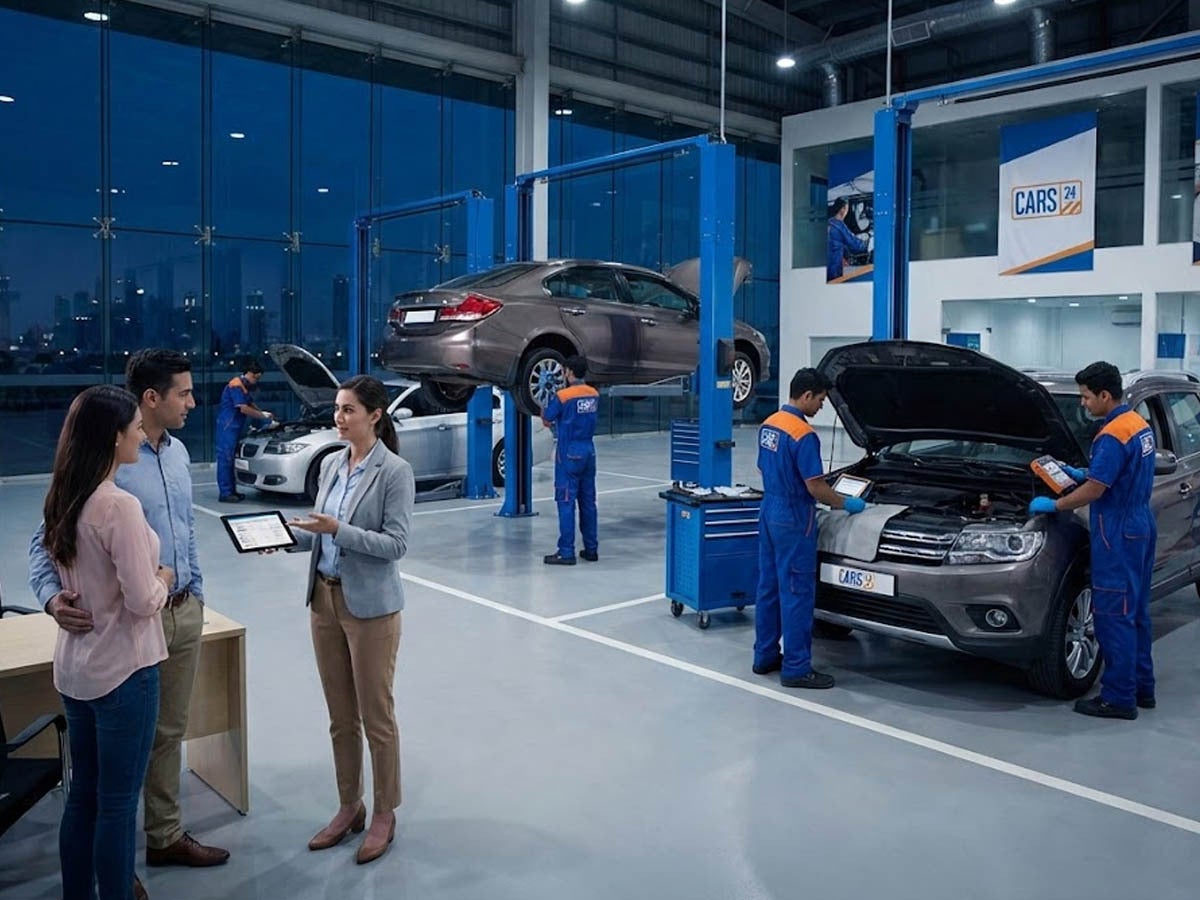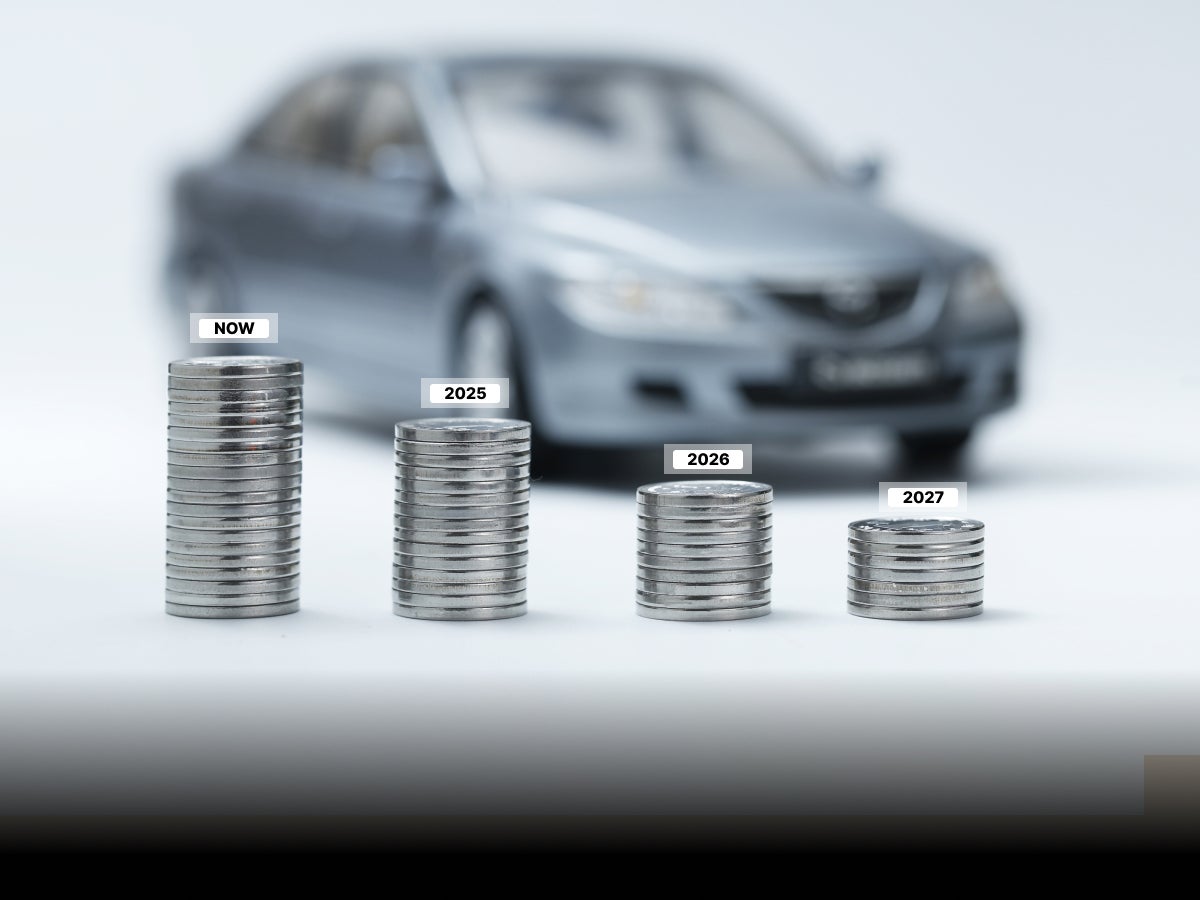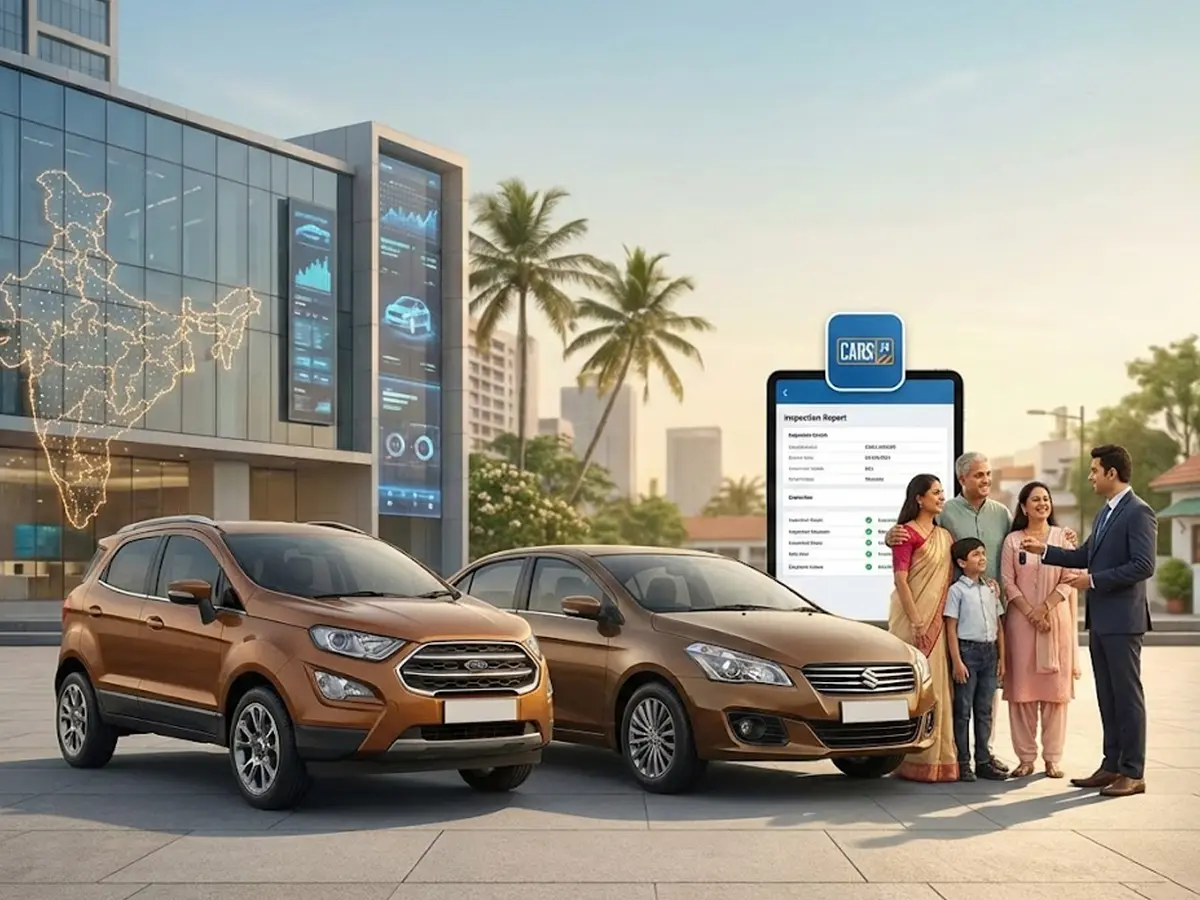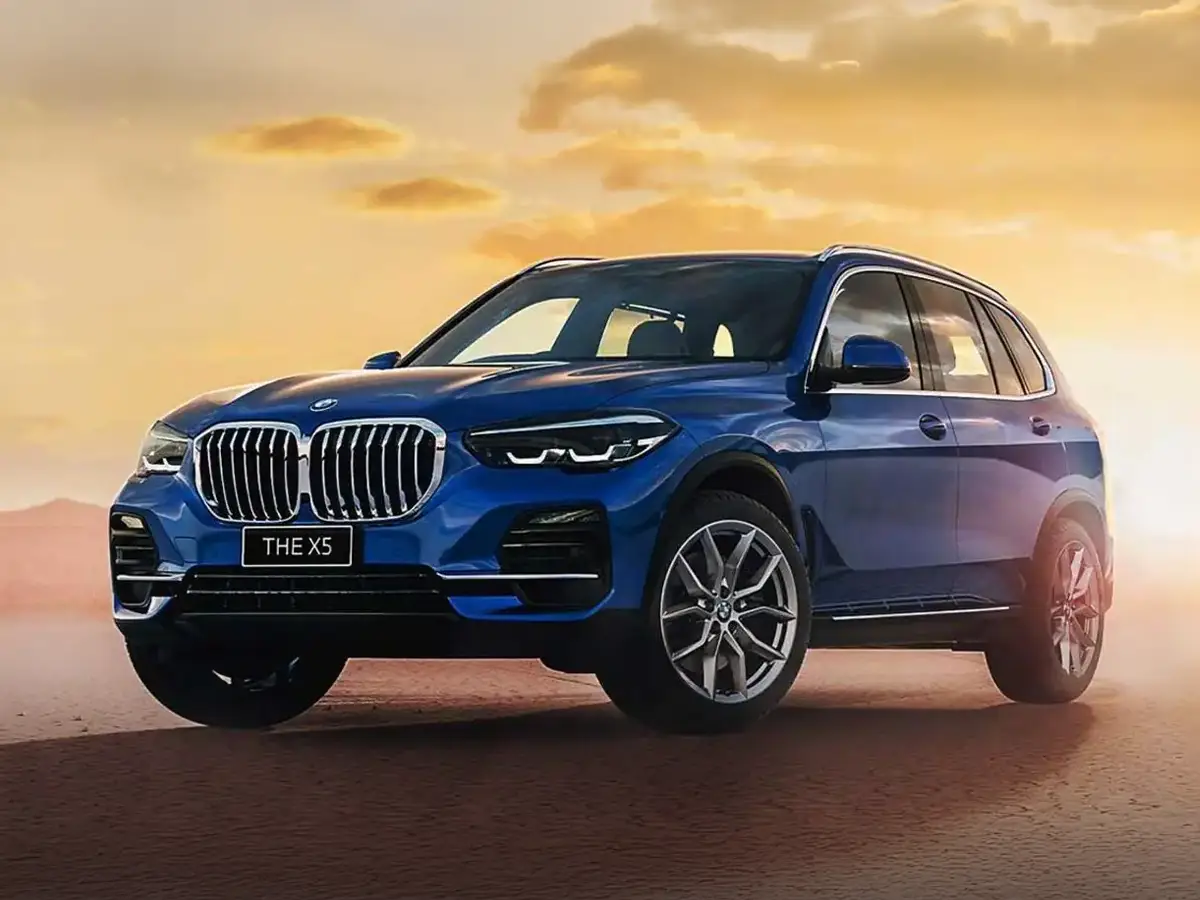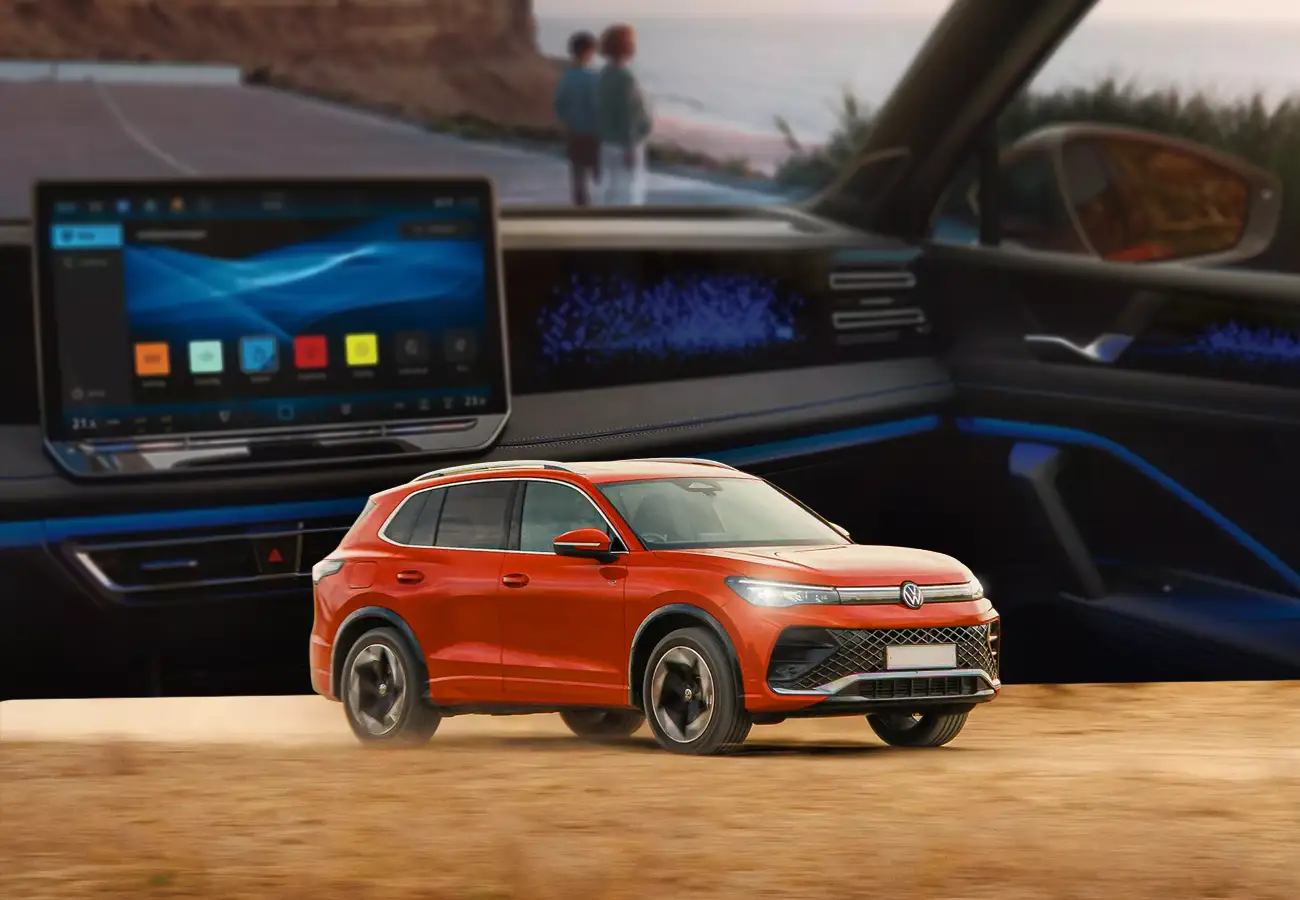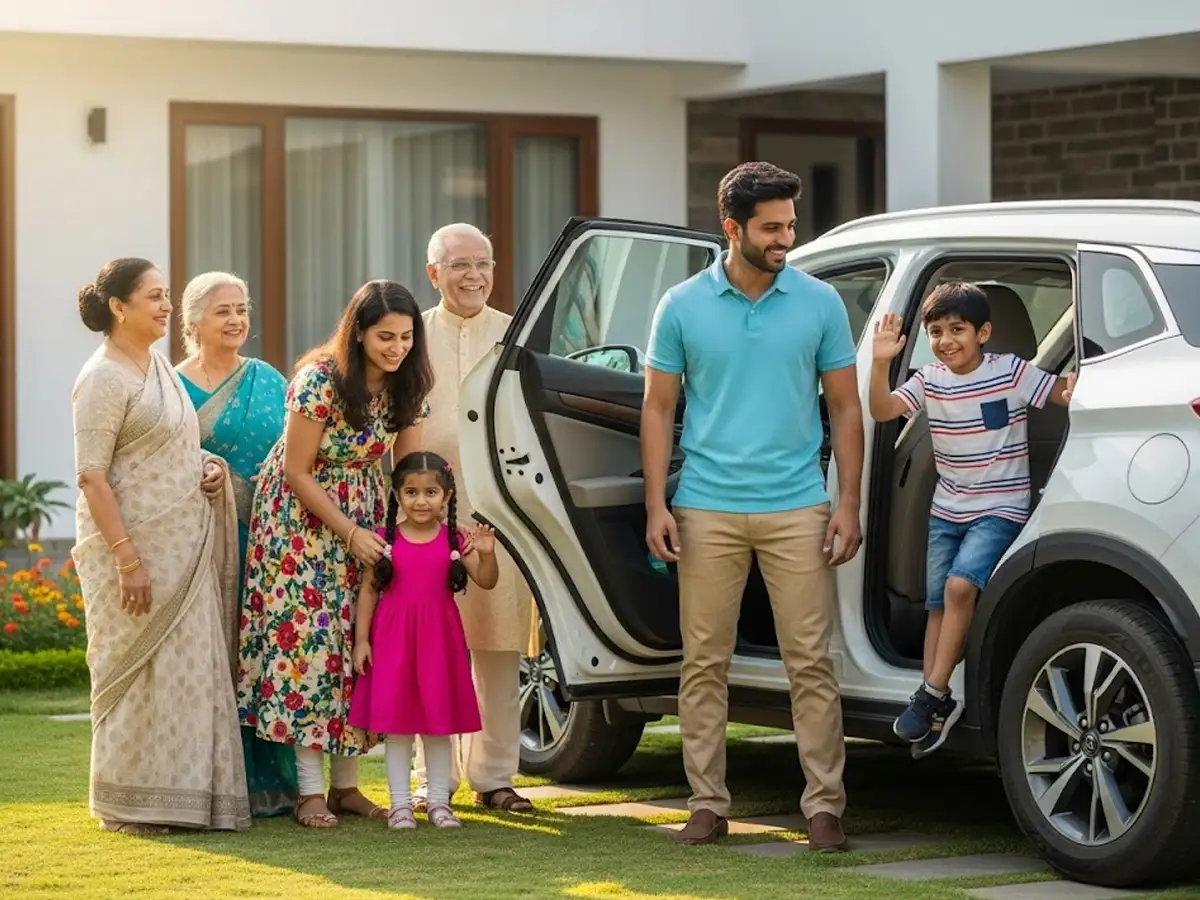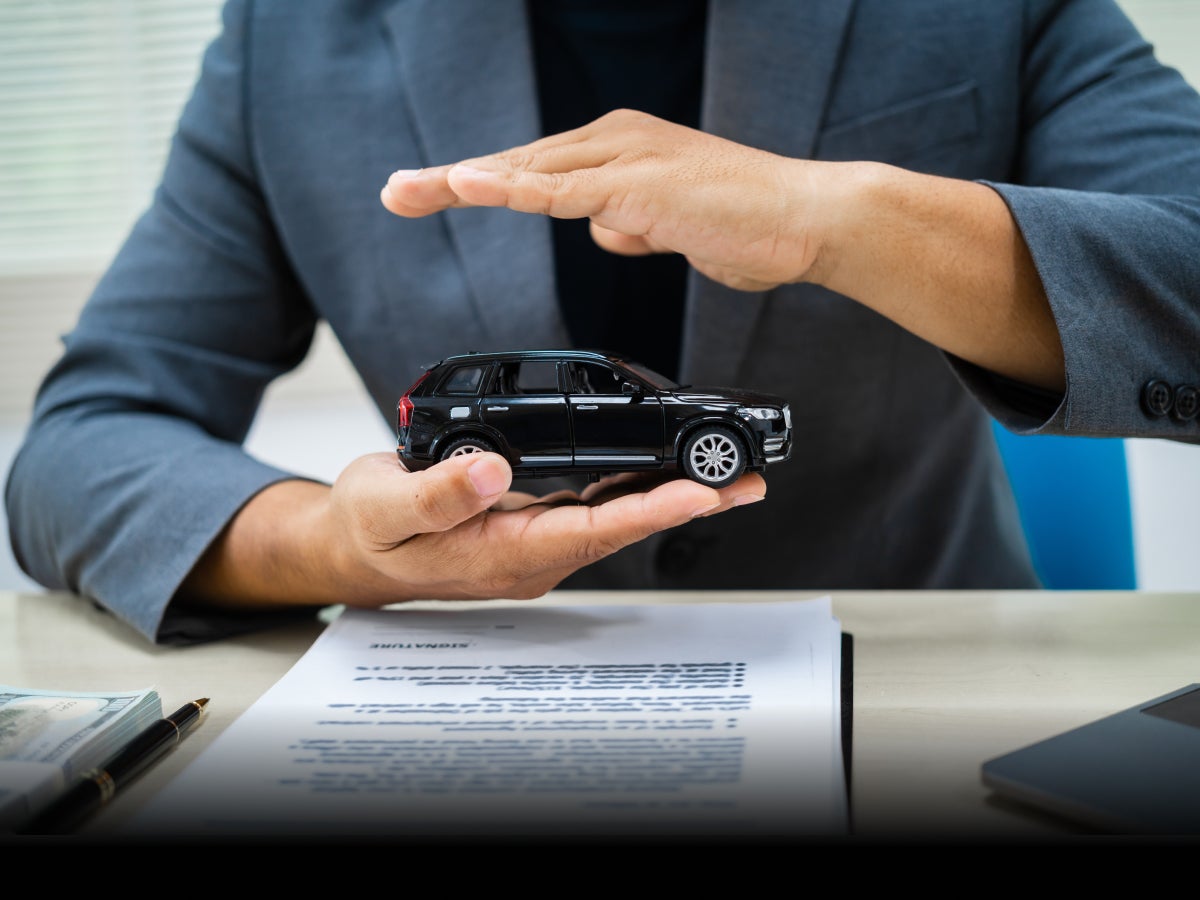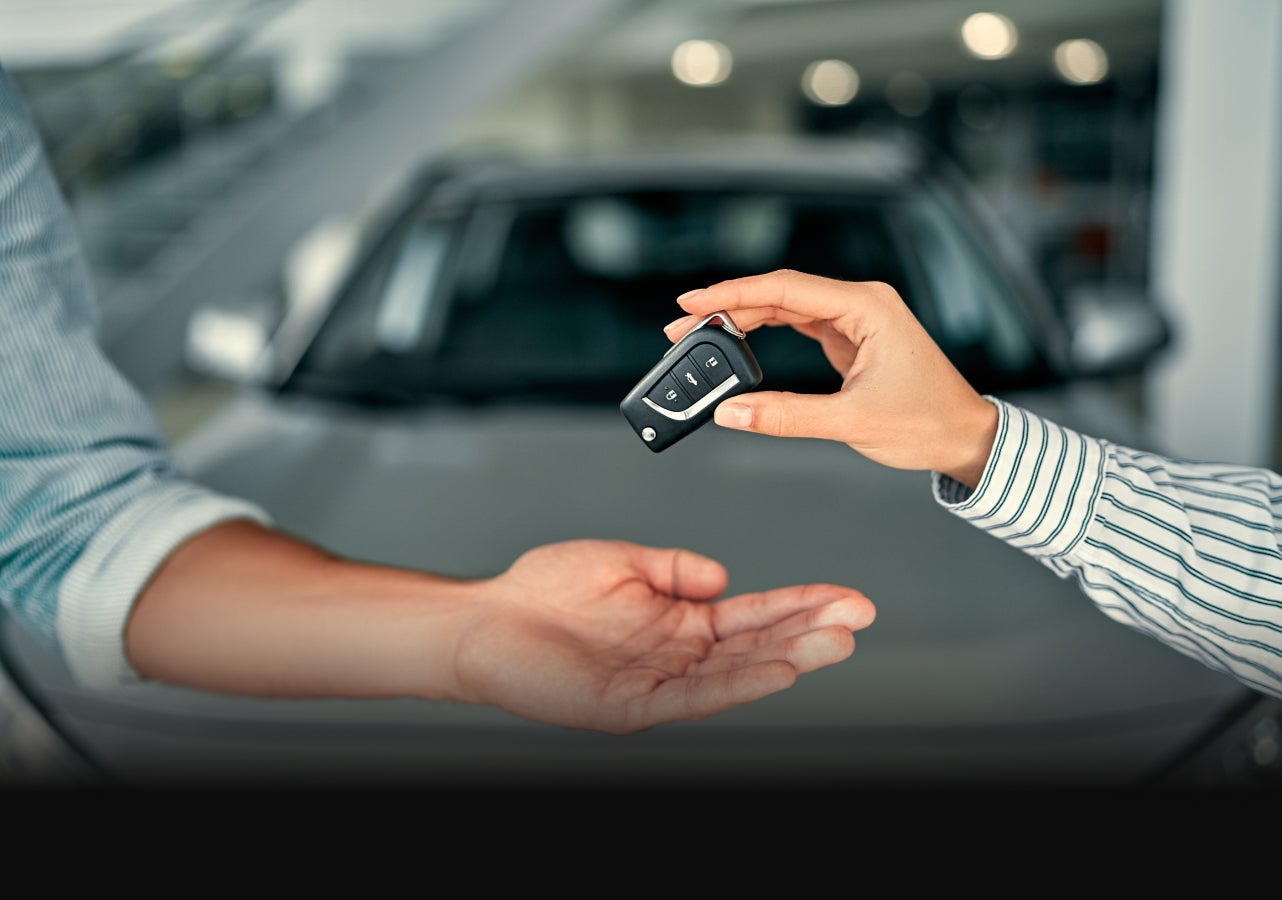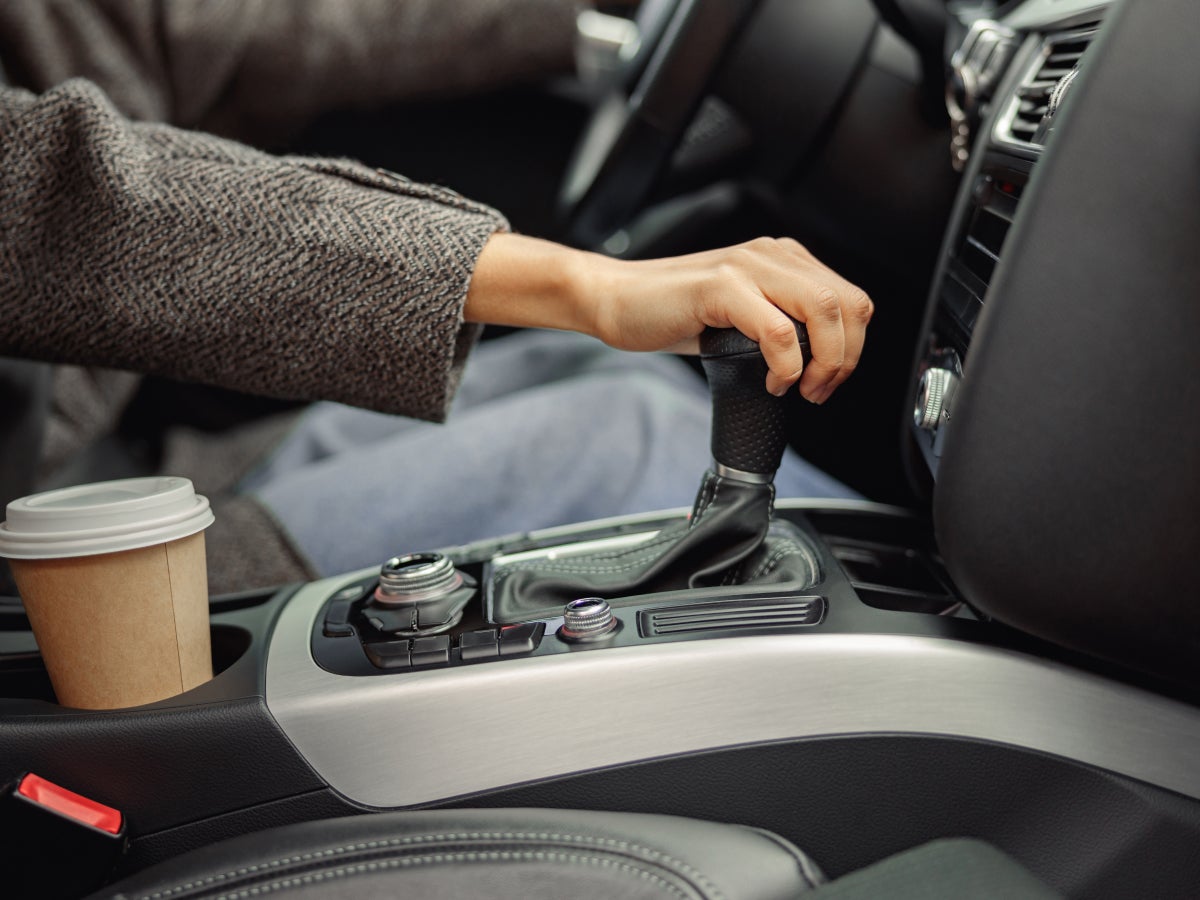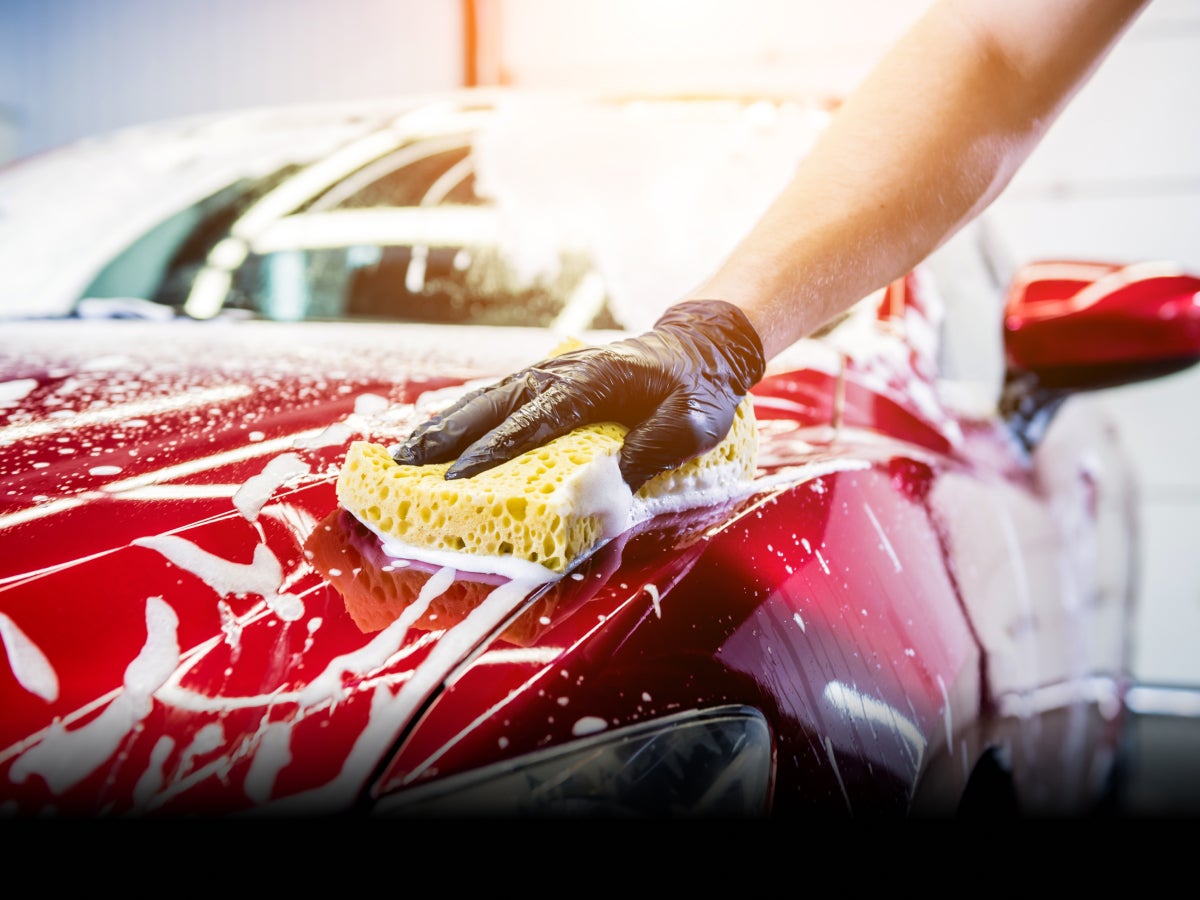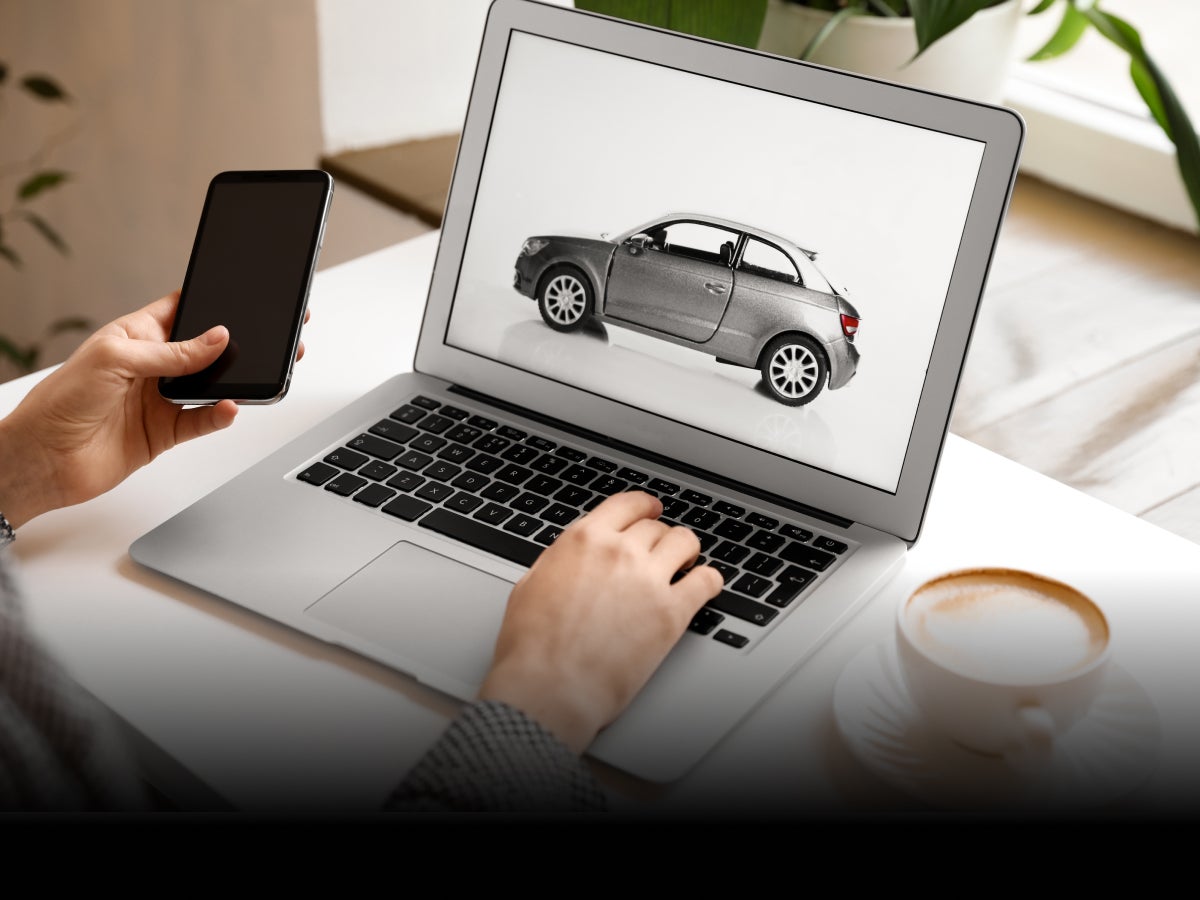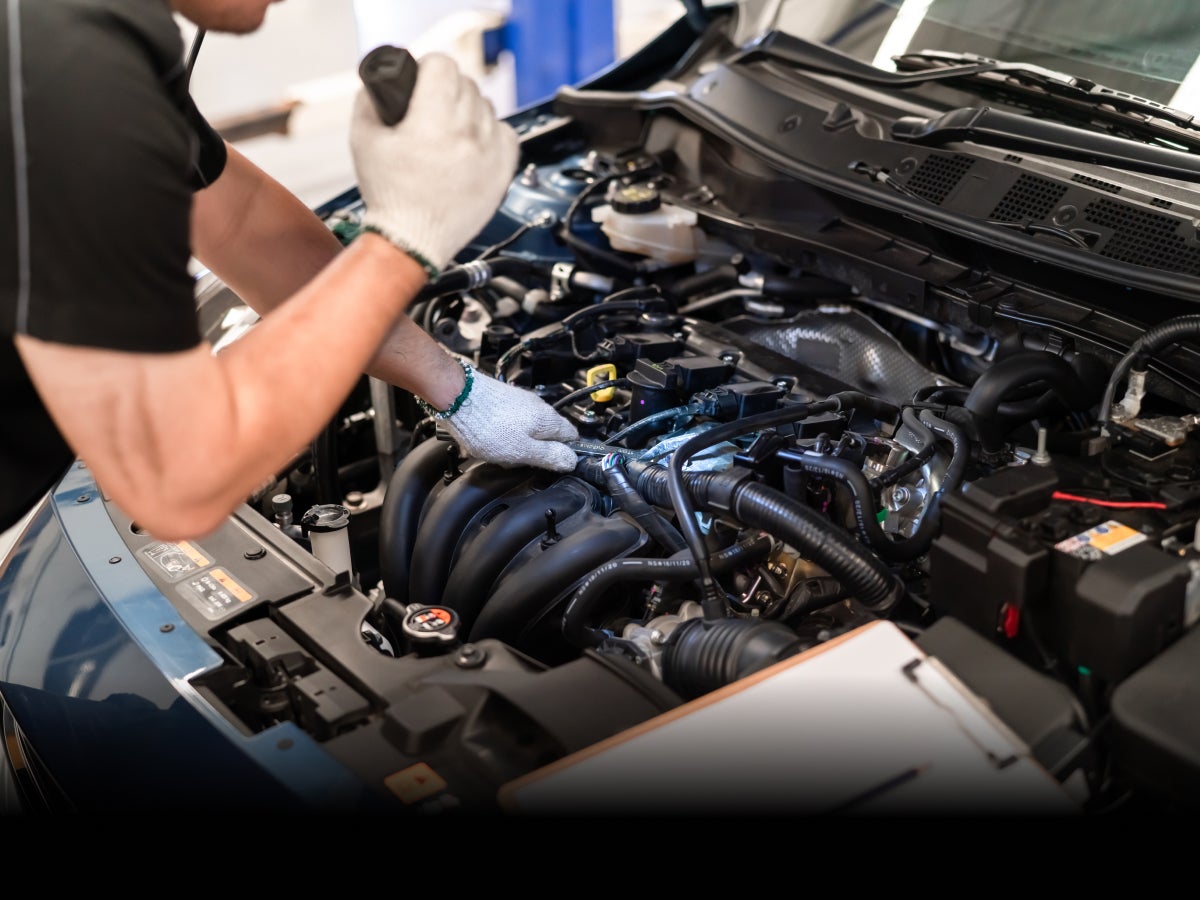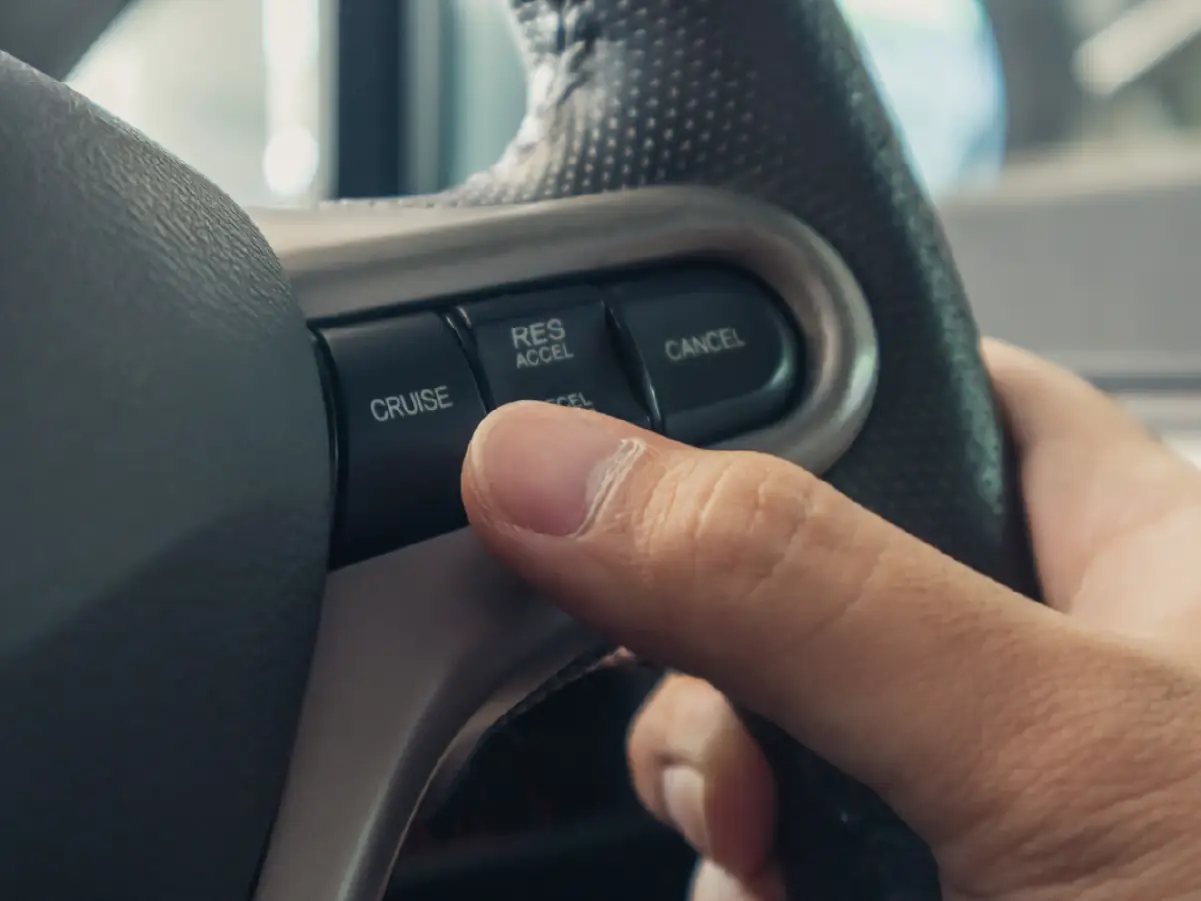

What is Cruise Control? An In Depth Guide
- 1Cruise Control can help increase the fuel efficiency of your car
- 2Using it on the highway can result in lower driver fatigue
- 3Adaptive Cruise Control can bring your car to a complete stop
Cruise Control is a common feature found on cars today. The first instance of this feature being used on cars can be traced back to 1908, but it was a rudimentary form of the system as we know it today. Furthermore, the cruise control feature was developed individually by many inventors around the 1950s. American car companies such as Chrysler were among the first to offer cruise control on their vehicles. European car companies played catch up in this regard, however, most luxury car brands in Europe started offering cruise control on their cars in the 1970s and 80s. In Germany, the system is called ‘Tempomat’ which is just the German translation for Cruise Control.
Cruise Control was initially developed to reduce fatigue in drivers, however, it also became a tool for saving fuel in the US. During the oil crisis of 1973, Cruise Control became highly popular and was offered an optional extra on many American cars. The technology behind Cruise Control has been updated over the years and it led to the invention of Adaptive or Autonomous Cruise Control as we know it today. While American car maker AMC and Mitsubishi were early pioneers in upgrading the Cruise Control to become autonomous, it was Mercedes Benz that offered a fully functioning Adaptive Cruise Control system that could also apply the brakes autonomously on its S Class model in 1999.
But, how does Cruise Control really work and what can you do to extract the maximum benefits from this system? Read on as we take an in depth look at the Cruise Control feature present in your car.
What Is Cruise Control?
It is a feature offered on many modern cars that helps to maintain a consistent speed without driver input. In simpler words, the driver of a car does not need to modulate throttle and can take their foot off the pedal if cruise control is engaged. While older cars used mechanical systems to achieve this effect, the system is electronically controlled on modern cars.
Different Parts of Cruise Control
A cruise control system depends on many parts to function optimally. In modern cars, a cruise control system typically makes use of wheel speed sensors, ECU (Electronic Control Unit) and mechanical actuators (in older cars). Furthermore, the system is controlled by buttons that are typically located on the steering wheel or on the stalks behind it. Let’s take a deep look at the role of different components of Cruise Control.
Wheel Speed Sensor
A wheel speed sensor can be dubbed the most important part of the Cruise Control Assembly. However, the sensor is not used only for the functioning of Cruise Control and is actively used to control other systems of the car as well. As the name suggests, the wheel speed sensor is responsible for capturing the speed of the vehicle at any given moment in time. It is typically located near the brake disc in most cars. The data from the wheel speed sensor is delivered to the ECU.
ECU (Electronic Control Unit)
This is the main chip in any car or you can call it the central computer that takes care of all the important jobs related to the functioning of a vehicle. The ECU receives the speed data of the car from the wheel speed sensor. When a driver employs the use of Cruise Control, the ECU constantly monitors the wheel speed data. If the speed of a vehicle changes from that set by the driver using the Cruise Control feature, the ECU can direct the throttle input to be increased or decreased to bring it back to the set speed.
Throttle Actuator
These are typically found on older cars in which the throttle pedal connects to the throttle body by a wire. The ECU sends signals to the throttle actuator to open or close the throttle to maintain the set speed by the driver. Modern cars have a system called drive-by-wire. This system cuts out the throttle cable and instead uses a sensor at the throttle pedal and an electronic actuator at the throttle body. The sensor in the pedal measures the driver’s input and the electronic actuator at the throttle body opens and closes the throttle depending upon the driver’s input. The Cruise Control system on such cars simply makes use of this system to maintain a set speed.
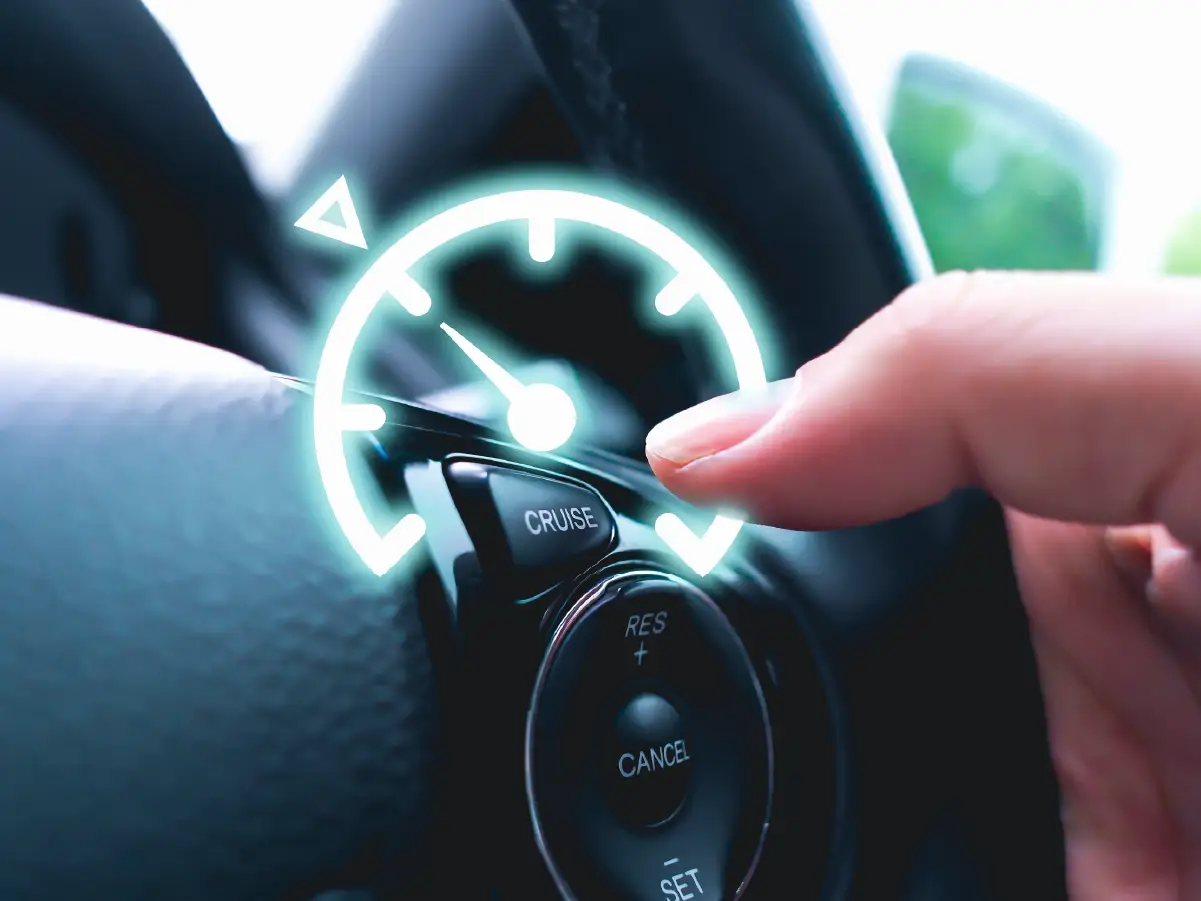
Cruise Control Buttons
These buttons are the physical interface that allow a driver to operate the Cruise Control system. Here’s a look at what each button does:
- ON/OFF - This button is responsible for activating or deactivating the entire cruise control system. You need to switch it ON to be able to use Cruise Control. If the button is put in the OFF position while Cruise Control is engaged, the system disengages and hands over control to the driver. For any of the other Cruise Control buttons to work, the ON/OFF button needs to be in the ON position.
- SET - This button is responsible for choosing the cruising speed. Once the Cruise Control system is ON, the driver can simply accelerate to a set speed and press the SET button. It informs the ECU that you want to cruise at this particular speed. A light typically comes on in the instrument cluster to inform the driver that the system is in play. In some cars, you can keep the SET button pressed to decrease the preset speed of the Cruise Control system. This decelerates the car from a preset constant speed without the driver pressing the throttle pedal. For this reason, the SET button often also has a ‘-’ sign on it as well.
- RES - This button is used to reactivate the cruise control system after it has been temporarily deactivated. The full form for RES is Resume. Once the driver presses the RES button, the vehicle accelerates back to the previous speed that was programmed by initially pressing the SET button. The RES button, when continuously pressed, can also be used to increase the set speed in some cars. This is why the RES button also has a ‘+’ sign on it as well.
- CANCEL - This button has only one use and that is to temporarily disengage the Cruise Control system. The driver can press this button in any scenario to deactivate Cruise Control.
Activating and Deactivating Cruise Control
As we mentioned before, the Cruise Control system can be operated using buttons by the driver. However, the system gets activated and deactivated depending upon certain driver inputs.
Activating Cruise Control
Activating the Cruise Control system can only be controlled by the driver. They have to switch ON the system, accelerate the car to the desired speed, and then press the SET button. Once this sequence of events is carried out, the ECU of the car automatically keeps the speed of the car constant.
Deactivating Cruise Control
Deactivating the Cruise Control system is under the control of the driver, however, it can happen due to one of many inputs. The driver can choose to simply deactivate the system by pressing the CANCEL button. However, the system also temporarily deactivates when the brakes are applied. To resume Cruise Control, the driver once again has to press the RES button. The ECU will then accelerate the vehicle to the predefined speed and will then maintain it. Pressing the SET button in such a situation will engage the Cruise Control system at the current speed of the vehicle.
Difference Between Automatic and Manual Transmission
The Cruise Control system in your car can react differently depending upon the type of transmission in your car.
Cruise Control with Automatic Transmission
The Cruise Control system is best paired with an automatic transmission. As mentioned earlier, the system can only be deactivated by either pressing the CANCEL button or applying the brakes in an automatic transmission car. This makes it pretty easy to use Cruise Control in an automatic car. Furthermore, the shifting of gears doesn’t affect the operation of Cruise Control. The ECU of the car can automatically shift gears while Cruise Control is engaged.
For example, if the driver of an automatic transmission vehicle applies the brakes, the Cruise Control is temporarily disengaged. In such an event, the transmission also shifts down a few gears to keep the engine in the proper RPM range. However, when the RES button is pressed, the car accelerates again and can also change gears until it reaches the highest one. Quite simply, the ECU manages the acceleration and gear changes at the same time, making life easier for the driver.
Cruise Control with Manual Transmission
While the Cruise Control on a manual transmission car has the same parts, buttons and also serves the same purpose, its operation can be a little different. When a driver applies the brakes in a manual transmission car, the system Cruise Control system disengages. If the speeds fall too low, the driver will then shift to a lower gear. However, at the time of pressing RES to resume Cruise Control, the vehicle will accelerate in the set gear, and this could result in the RPMs of the engine rising to the red line.
Furthermore, the operation of the clutch or shifting gears in a manual transmission car can also disengage the Cruise Control system for safety purposes. To work around this, drivers have to first accelerate to a speed at which they can put the car into the highest gear, and then activate Cruise Control. If you are constantly having to disengage the Cruise Control in a manual transmission car, the repetitive action can actually require more physical effort and can also reduce the concentration levels of the driver on the road. However, on an open highway with enough gap between cars and triple digit cruising speed, the Cruise Control system in a manual transmission car also works as effortlessly as it does in automatic transmission cars.
Advantage and Disadvantages of Cruise Control
Using the Cruise Control feature on your car can have its own advantages and disadvantages, and it is imperative to understand these before using the system. This will not only help you in squeezing the maximum possible efficiency out of Cruise Control, but will also keep you forewarned of the negative outcomes associated with using Cruise Control.
Advantages of Cruise Control
- Reduced Driver Fatigue: One of the biggest advantages of Cruise Control is reduced driver fatigue. Keeping the throttle position in a fixed position on the highway can build up fatigue in the leg muscles of a driver. The use of Cruise Control allows a driver to remove their legs from the pedal and keep them in a more comfortable position, thus greatly reducing driver fatigue.
- Improves Fuel Efficiency: The constant speed maintained by Cruise Control can also lead to major fuel efficiency gains. Constant acceleration and deceleration can cause increased fuel consumption, however, maintaining a constant speed on a highway allows the engine to work efficiently, thus reducing fuel consumption.
- Helps Avoid Speeding Fines: Long open highways can decrease our mind’s ability to judge speed, and most drivers end up driving at a higher speed than what they set out at, or even feel comfortable. Many drivers also end up crossing the speed limit and end up incurring heavy fines. Cruise Control is an excellent mechanism to keep your speed under the limit to avoid any penalties.
Disadvantages of Cruise Control
- Reduced Driver Concentration: Long stretches of highway driving with Cruise Control can often drop the concentration levels of drivers, and can lead to a delayed braking response in the worst situations. While Cruise Control offers physical relaxation, drivers still have to stay mentally aware to react in time to the changing conditions around them.
- Increases Fatigue In Traffic: The constant engaging and disengaging of the Cruise Control system in traffic conditions can increase mental fatigue in drivers. If you find yourself constantly engaging the system, it is better to switch it off completely and reengage when the traffic conditions around you change.
- Dangerous In Adverse Weather Conditions: The use of Cruise Control is not advised in adverse weather conditions. These include rain, wet roads, ice build-up on roads or when it is snowing. One should also disengage Cruise Control when driving over dirt roads or pebble roads as it can make the vehicle react unpredictably.
- Not Usable At Low Speeds: The Cruise Control system can only engage at a speed of 30 or 40 km/h. The system cannot be used under those speeds in most cars.
What is Adaptive Cruise Control (ACC)?
Not that you know everything about the Cruise Control system to use it efficiently, you must also understand the Adaptive Cruise Control. It can also be referred to as Autonomous Cruise Control or Auto Cruise Control. This system builds on the functionality of the Cruise Control feature. However, while Cruise Control can automatically control the acceleration of a car, and even the braking in some high-end models, it is still dependent upon driver input for analysing any situation on the road. Basically, the driver has to judge the surroundings and give the command to the vehicle to speed up or slow down.
Adaptive Cruise Control builds on this and gives the vehicle a higher level of autonomy in judging its surroundings and automatically reacting to them, without any driver input. That said, the driver can choose to take over anytime when the Adaptive Cruise Control feature is active.
How does Adaptive Cruise Control Work?
While Cruise Control works solely based on vehicle speed, Adaptive Cruise Control also brings distance into the mix. Therefore, before engaging the system, the driver has to not only tell it the desired cruising speed, but also define the gap to the vehicle in front. Most cars offer drivers three settings to set the distance, with one end being the closest to the driver in front and the other maintaining maximum distance.
The system gives preference to the distance settings. What it means is that if the vehicle in front slows down and the driver of the vehicle does apply the brakes, the system will automatically start decelerating the vehicle to maintain the same gap as before from the vehicle in front. Once the vehicle in front stops decelerating and starts accelerating again, the Adaptive Cruise Control system accelerates back to the set speed. However, despite having a clear road in front of it, the system will not allow the vehicle to go beyond the preset speed set by the driver.
Adaptive Cruise Control does not need a lead vehicle to work. The system can cruise on its own and when a vehicle is detected, it automatically maintains the desired gap.
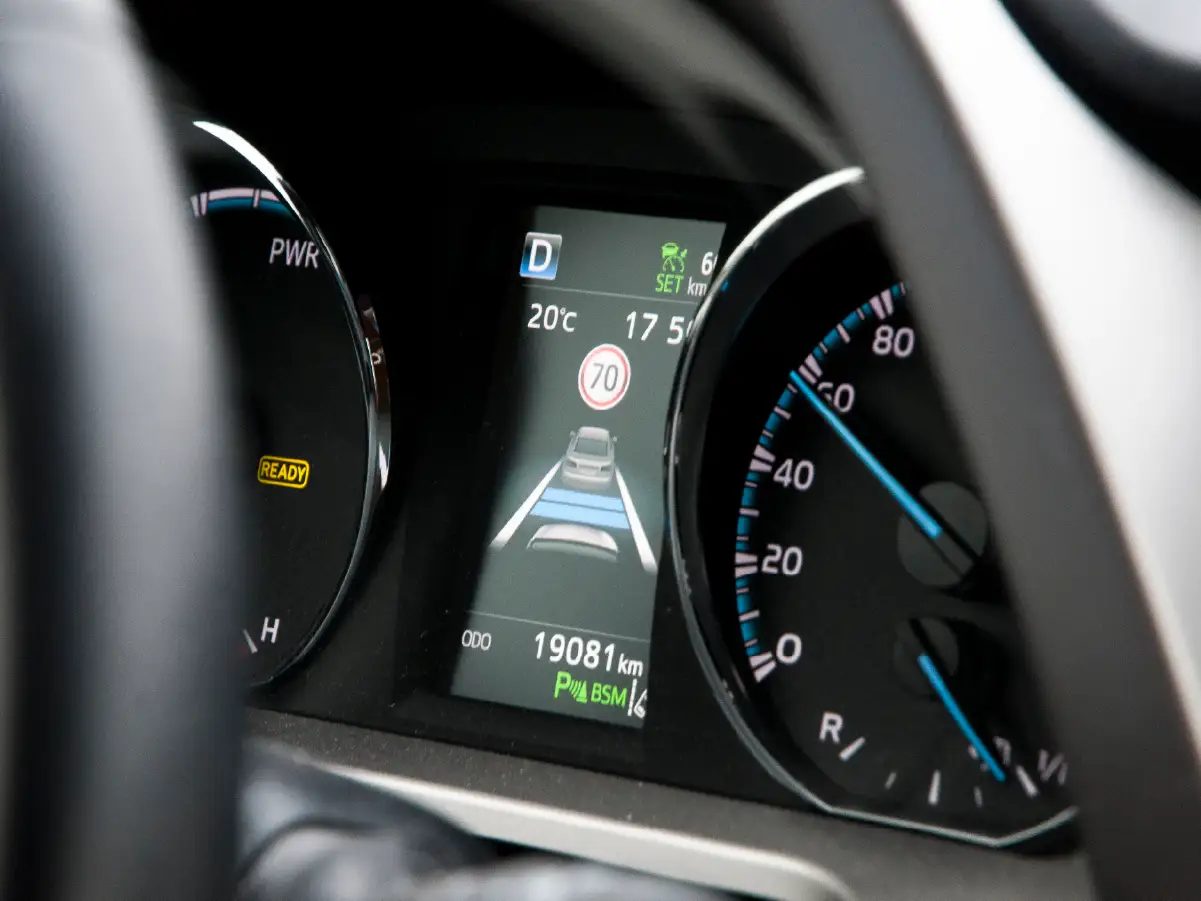
Additional Parts Required for Adaptive Cruise Control
The Adaptive Cruise Control system builds on the Cruise Control system that existed before it. Therefore, the buttons (ON/OFF, SET, RES and CANCEL) remain the same and continue to serve the same purpose in this system. Additionally, certain other parts are added. While the basic design of Adaptive Cruise Control remains the same, car makers employ additional computers onboard the vehicle to quickly process the vast amounts of data required for the functioning of this feature. This can differ from one car maker to another. However, all car makers need to add the following to their cars for Adaptive Cruise Control to even function.
Distance Button
The Distance button is added to the steering wheel of a vehicle added with Adaptive Cruise Control. This helps the driver to define the desired distance they want to maintain from the car in front. Most often, the distance is defined by three bars in the instrument cluster, with one denoting the least distance and three denoting the maximum distance. However, car makers can choose to offer a different indicator for the distance.
Camera/Radar/Li-Dar
To give a vehicle the level of autonomy that would allow Adaptive Cruise Control to function, a car uses a camera, Radar or Li-DAR technology. Car makers can also opt to use a mix of these technologies to come up with a system that can safely look at and interpret the surrounding areas of a vehicle. Drivers have no control over how these systems function, however, they are well tested and programmed to react in a predictable manner. Most car makers opt to have cameras at least, and apart from gauging the surroundings, they can also pick up useful information like speed limits and adjust the speed of the vehicle.
ADAS suite
Adaptive Cruise Control required the vehicle to work autonomously, and while ACC is one feature, it is part of the wider ADAS suite that is present on many cars and can take over the controls of a vehicle. The ADAS suite can not only operate the throttle and the brake, but can also steer as well. These systems are intertwined in a complex fashion, and most of the additional sensors and tech onboard used for ADAS systems are also required for Adaptive Cruise Control. Essentially, ACC is a part of ADAS but whereas most ADAS features are offered to increase the safety quotient of a vehicle, Adaptive Cruise Control is intended to reduce the driver’s workload.
Does Adaptive Cruise Control Work with a Manual Transmission?
Like regular Cruise Control, Adaptive Cruise Control can work with a manual transmission. The Honda City is a great example of that, however, most car makers prefer to offer Adaptive Cruise Control only with the automatic transmission variants of a car. The Adaptive Cruise Control will disengage every time there is a gear shift, and this makes it an unsatisfying experience and also rather distracting for the driver. For most parts, Adaptive Cruise Control is best paired with an automatic transmission car.
Advantages and Disadvantages of Cruise Control
Just like regular Cruise Control, Adaptive Cruise Control too has its own advantages and disadvantages. Knowing them can allow you to use this feature to its maximum while remaining safe at the same time.
Advantages of Adaptive Cruise Control
- Reduced Driver Fatigue: The biggest advantage of Adaptive Cruise Control is that it can reduce driver fatigue. With a vehicle that can accelerate and brake itself, along with steering that is governed by other ADAS functions, a driver virtually just has to keep their hands on the wheel.
- Adherence Of Speed Limit: Adaptive Cruise Control can pick up on speed limit signs that can sometimes be missed by the driver, and accordingly reduce the speed of the vehicle. This can save you from speeding fines.
- Can Deal With Stop-Start Traffic: Adaptive Cruise Control can bring a vehicle to a complete stop, compared to regular Cruise Control which cannot work at low speeds. Furthermore, ACC can start driving autonomously, once the vehicle in front starts to move. This can be a boon at tolls or even in dense traffic.
Disadvantages of Adaptive Cruise Control
- Reduced Driver Attention: As ACC requires a driver to put in less effort, they are more susceptible to drowsiness. Many ADAS systems in cars have a drowsiness metre to combat this issue, however, it can lead to a potentially dangerous situation on the road.
- Driver Logic: Adaptive Cruise Control works on the logic that has been pre-fed into the system. However, sometimes, driver logic might differ. For example, a driver might use the brakes more gently in rainy conditions whereas the automatic braking feature might apply them with additional force that could result in a loss of traction.
- Higher Cost: Adaptive Cruise Control is part of a bigger system, and requires complex pieces of technology to work. This can significantly increase the upfront cost of purchasing a vehicle.
Summary
Cruise Control systems were designed to reduce the work load of drivers on long stretches of highways with relative gaps between cars. While the system is definitely a great addition to reduce driver fatigue, it should be used judiciously to make sure the vehicle is always operated in a safe manner. Adaptive Cruise Control can work more proactively; however, it is a complex system that requires many different systems to work together. Failure of any one system can adversely affect the ACC. Ultimately, while both Cruise Control and Adaptive Cruise Control are designed to reduce driver workload, the driver still has to stay focused on the road conditions to maintain maximum safety.
Frequently Asked Questions
Expand all